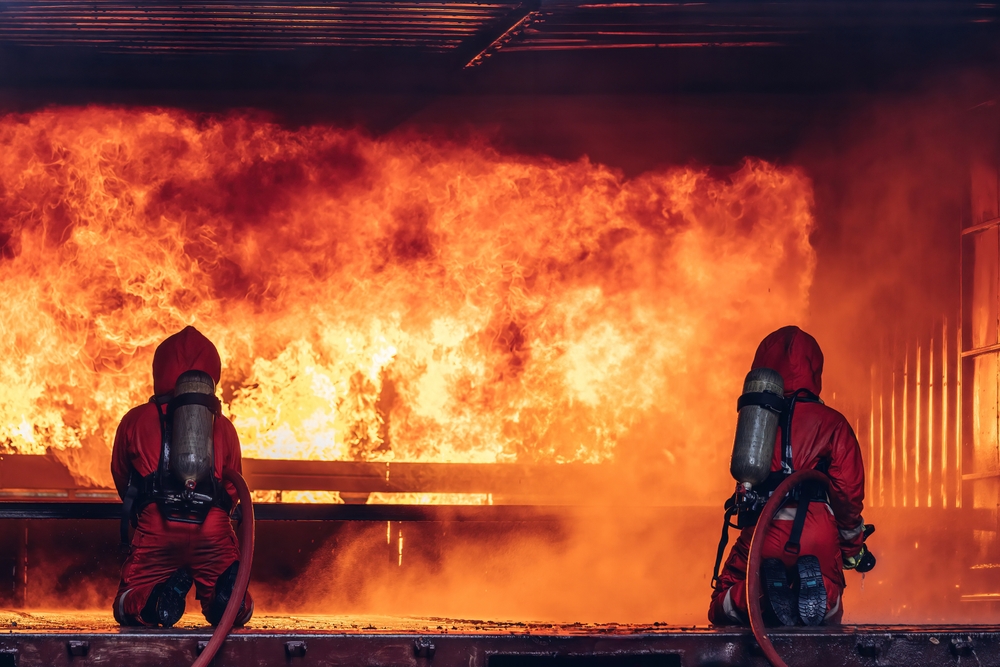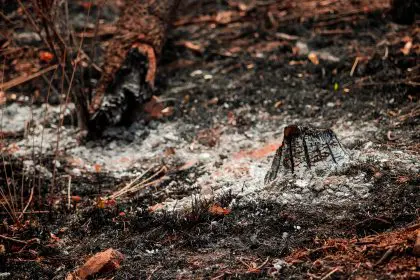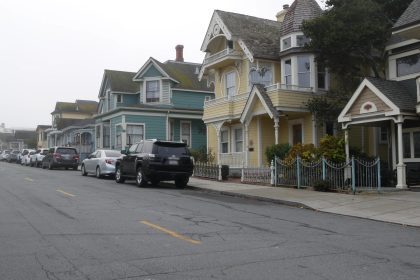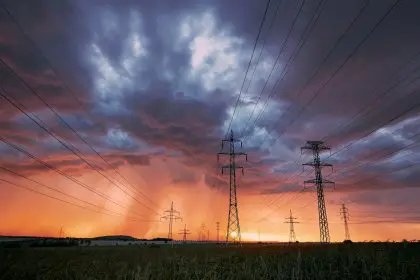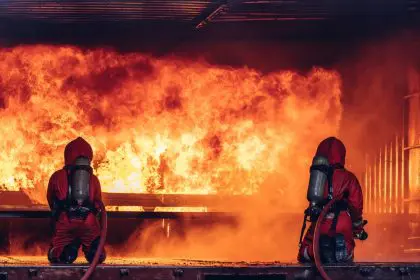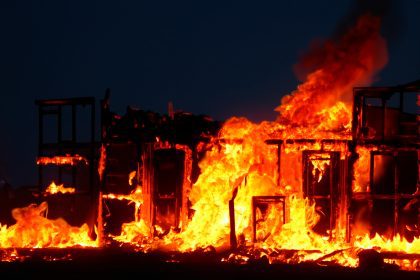A series of destructive wildfires erupted across San Diego County on Tuesday morning sending residents fleeing from their homes as hurricane-force winds fueled the rapid spread of flames. The Lilac Fire emerged as the largest threat consuming 80 acres in Bonsall and forcing 86 residents to evacuate while damaging two structures in its path.
The intensity of these fires has caught many long-time residents off guard with some describing the scene as apocalyptic. Emergency response teams are working around the clock to protect homes and infrastructure while managing evacuations in affected areas. The speed at which these fires are spreading has created unprecedented challenges for firefighters and emergency personnel.
Nature unleashes its fury
Weather conditions turned extraordinarily dangerous as wind speeds reached a staggering 102 mph across the region. The National Weather Service issued urgent red flag warnings throughout Southern California identifying the situation as particularly dangerous. These extreme conditions left nearly 50,000 residents without power across San Diego Riverside Los Angeles and San Bernardino counties.
The combination of high winds and low humidity has created perfect conditions for fire spread making containment efforts extremely challenging. Weather experts warn that these dangerous conditions could persist for several days potentially leading to more fire outbreaks and complicating ongoing firefighting efforts.
Multiple fires spark simultaneous threats
While the Lilac Fire commands the most attention several other blazes have erupted across the county. The Pala Fire burned through 17 acres while firefighters managed to contain the Riverview Fire at 1 acre. Meanwhile the Friars Fire continues to pose a significant threat with zero containment across its 2-acre spread demonstrating the overwhelming challenges facing emergency responders.
The simultaneous nature of these fires has stretched emergency resources thin requiring careful coordination between multiple agencies and jurisdictions. Fire departments from neighboring counties have stepped in to provide additional support highlighting the collaborative spirit of California’s emergency response network.
Communities unite in crisis
San Diego County residents have demonstrated remarkable resilience in the face of this emergency. Local communities are coming together sharing resources and information while supporting those forced to evacuate. Social media channels have become vital lifelines for real-time updates and community support efforts.
Numerous local businesses and organizations have opened their doors to displaced residents offering temporary shelter and essential supplies. Community centers and schools not affected by the fires have been transformed into emergency shelters providing safe havens for evacuees and their pets.
Emergency response in action
First responders are working tirelessly to combat these fires under extremely challenging conditions. Their efforts are complicated by the unpredictable winds and rapidly changing fire behavior. Emergency crews must balance aggressive firefighting tactics with ensuring their own safety in these treacherous conditions.
The coordination between various emergency services has been crucial in managing this crisis. Police departments are managing evacuation routes while firefighters focus on containment efforts and medical teams stand ready to assist anyone affected by smoke inhalation or other fire-related injuries.
The impact on daily life
The fires have disrupted normal activities across the county forcing school closures and leaving parents scrambling to make alternative arrangements. Many businesses have temporarily shut down and residents find themselves adapting to life without power as utility companies work to restore services safely.
Transportation networks have been significantly impacted with several major roads closed due to fire activity or poor visibility from smoke. Public transit services have been modified to accommodate emergency operations and evacuation needs creating additional challenges for commuters and residents trying to reach safe areas.
Looking ahead at continued dangers
Weather forecasts suggest these dangerous fire conditions may persist throughout the week raising concerns about potential new outbreaks. Emergency management officials emphasize the importance of remaining prepared and vigilant. Residents are urged to keep emergency supplies ready and stay informed about evacuation routes and safety protocols.
The extended forecast offers little relief with continued high winds and low humidity expected to maintain dangerous fire conditions. This outlook has prompted authorities to maintain elevated staffing levels and emergency response readiness across the region.
Prevention and preparation become priority
As the community battles these fires the focus extends beyond immediate response to long-term prevention strategies. Local authorities are emphasizing the importance of creating defensible spaces around homes maintaining emergency kits and developing family evacuation plans. These preparations become increasingly crucial as California faces more frequent and intense fire seasons.
Educational initiatives are being launched to help residents understand fire safety and prevention measures. Community workshops and online resources provide valuable information about protecting properties and preparing for future fire events building a more resilient community for the challenges ahead.
The environmental and economic impact
Beyond the immediate danger to life and property these fires pose significant environmental and economic challenges for the region. The destruction of natural habitats and the release of pollutants into the atmosphere create long-term environmental concerns that will require careful monitoring and management.
Local businesses particularly in the agricultural sector face substantial losses as fires threaten crops and livestock. The economic ripple effects of these disasters often persist long after the flames are extinguished affecting everything from tourism to property values in affected areas.
Looking to recovery and rebuilding
Even as firefighters continue their battle against active fires community leaders are beginning to plan for recovery and rebuilding efforts. The focus on long-term resilience includes improving emergency communication systems updating building codes for fire resistance and enhancing community preparedness programs.
The spirit of San Diego remains unbroken as residents band together to support one another through this crisis. The community’s response to these fires demonstrates the strength and resilience that will be crucial for recovery and rebuilding in the aftermath of these devastating wildfires.

